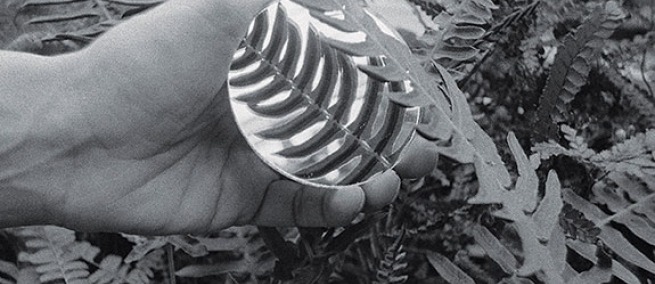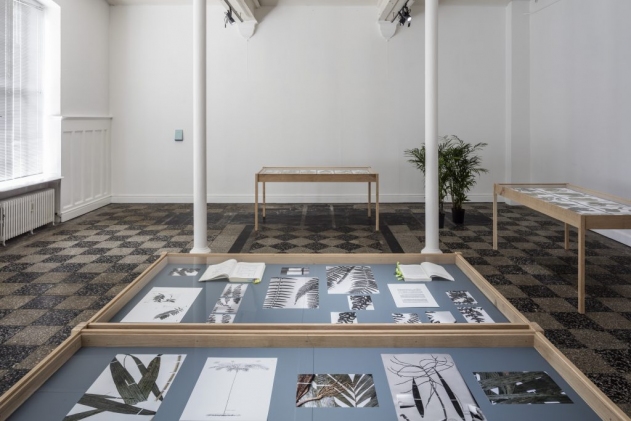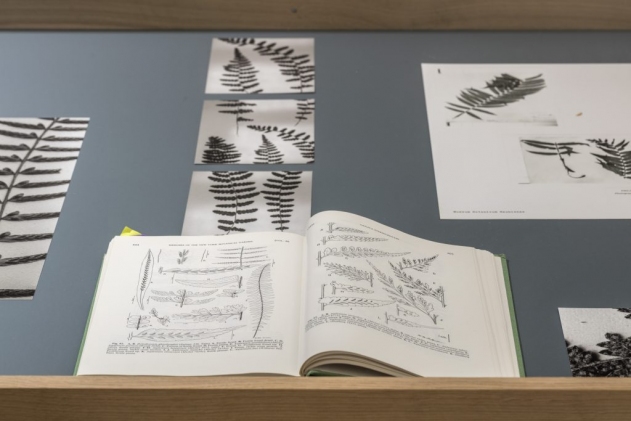
The film WORD FOR FOREST, which made its world premiere in 2018 at CPH: DOX, repatriates a plant from the Copenhagen Botanical Garden to Santiago Comaltepec in Oaxaca, Mexico. The 22-minute WORD FOR FOREST was made by Danish artist and filmmaker Pia Rönicke. The film is part of an installation Rönicke made called “The Cloud Document” which includes the means botanists have used to classify plants including DNA barcodes and lithographs. The plant on which WORD FOR FOREST centers is one of over 50,000 plant species that was collected by a Danish botanist named Frederik Liebmann in 1842. Science & Film sat down with Rönicke at CPH: DOX in Copenhagen.
Science & Film: How did you come upon the story of this plant?
Pia Rönicke: I started out in the botanical garden doing 16mm filming there and I didn’t know where I was going. I had no story. I was filming with a 10mm lens, which is a very wide angle lens. Rather than shooting a big landscape with it I decided to go in close.
I was curious about the live plants. How did that physical plant enter into the space? What’s the story behind that? Then, in greenhouses, I found a plant with a sign that it was from 1842. It’s a Cycad. It’s an old plant in the scheme of plant history. I asked the Botanical Garden if they could look in the databases and tell me where that Cycad came from. I found out that it was the ancestor of a seed that a Danish botanist who travelled to Mexico in the 1840s brought back.
S&F: Why did he bring seeds from Mexico back to Copenhagen?
PR: There were various interests. He was collecting and pressing plants. He was in Mexico for three years and collected 50,000 samples of plants, or that’s what exists in the Herbarium now. Then I wondered, oh shit how do I relate to that? That brought me to Mexico.
In the Herbarium [in Copenhagen] I met a botanist from Mexico. That became a real field trip and I went with two botanists to retrace this Danish botanist’s route [from the 1840s]. He had collected widely; botanists often did that because they wanted to name the world, they had this colonial perspective.

S&F: So you were looking at samples the botanist originally collected and traveled to Mexico to see if those plants still exist? No one had looked at that?
PR: Yes. Not so specifically from his collection. But it was not only about that, it was about resituating the plants back into their original habitat.
S&F: What was your approach to telling the story of the Cycad in WORD FOR FOREST?
PR: It’s a poetic film; it’s not a film where I tell you everything. But it’s trying to follow the plant life. I wanted to give people a sense that they could step in [to the story]. It’s kind of a travelogue. I started out filming WORD FOR FOREST in the botanical garden and then I went to Mexico to follow the seed. It’s a bit of a metaphor because I didn’t bring back the seed but the film of the plant that was taken. A lot of Cycads are endangered now because they have been so overly used for ornamentation, and because of climate change.
I worked with a local organization in Oaxaca, an arts organization, and we went to the mountains with a different perspective than the botanical perspective. We tried to move away a little bit from this westernized thinking of plant life. In the state of Oaxaca, there is a lot of conflict but it’s a state that has had powerful social movements against overruling powers of the government. They have municipalities that are owned by the community, so the community owns the land.
S&F: You mentioned the colonial perspective. Is that part of your impetus for making this film, to resituate these plants?
PR: Yeah, in a way. These herbariums are often very closed research collections so a consciousness of that history is not really brought up. For me, there is a link to that history and also the biodiversity crisis we’re in today. If you look for example at ferns–trees are easier to document when they disappear–there is a lot of variation of ferns in Mexico, over 1,000 different species. But it is rather undocumented how the population diversity is changing.
Right now I’m working with a fern specialist in Mexico who wants to write a scientific article in relationship to this, but as a filmmaker, an artist, you can ask the questions but that doesn’t necessarily mean you can come up with the answers. It was interesting to work with Mexican botanists because they are really skilled field botanists.

S&F: Is this a project that you’ll continue in some way, or is the film the capstone?
PR: I’m going back to Oaxaca to exhibit [the film]. But I also have the feeling that I’d like to do something that’s more local about some of these issues. This was a story that came because I found this material.
Pia Rönicke’s work has been exhibited around the world including at solo shows at the Tate Modern in London, Display Gallery in Prague, and at the Moderna Museet in Stockholm.
TOPICS